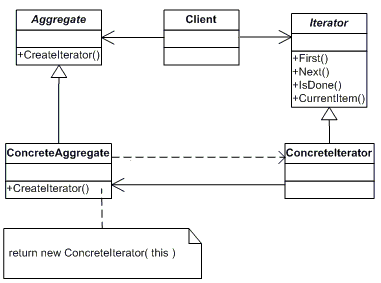Definition
Provide a way to access the elements of an aggregate object sequentially without exposing its underlying representation.
Explanation
In object-oriented programming, the iterator pattern is a design pattern in which an iterator is used to traverse a container and access the container’s elements. The iterator pattern decouples algorithms from containers; in some cases, algorithms are necessarily container-specific and thus cannot be decoupled.
Iterators that traverse all elements of a container, very often, form the base for more specific Iterators that allow for filtering. The .NET Framework Linq to Objects is a good example of that.
Screencast
TypeScript Code
module Iterator {
interface IEnumerable {
[index: number]: T;
length: number;
}
interface IIterator {
reset(): void;
moveNext(): boolean
current: T;
}
export class Enumerator implements IIterator {
protected _index: number;
protected _items: IEnumerable;
protected _max: number;
constructor(items: IEnumerable) {
this._items = items;
this.reset();
}
public reset(): void {
this._index = -1;
this._max = this._items.length - 1;
}
public moveNext(): boolean {
return (this._index++ < this._max);
}
get current(): T {
if (this._index < 0 || this._index > this._max) {
throw new Error("Invalid operation.");
}
return this._items[this._index];
}
}
window.addEventListener("load", function () {
var persons = new Array("Wesley", "Norbert", "Sam", "Sridhar");
var h2Nodes = document.getElementsByTagName("h2");
Output.WriteLine("Iterating through the array.");
var enumerator = new Enumerator(persons);
while (enumerator.moveNext()) {
Output.WriteLine(enumerator.current);
}
Output.WriteLine("Iterating through a NodeListOf<HTMLHeadingElement>.");
var nodesEnumerator = new Enumerator(h2Nodes);
while (nodesEnumerator.moveNext()) {
Output.WriteLine(nodesEnumerator.current.textContent);
}
});
}
Output
